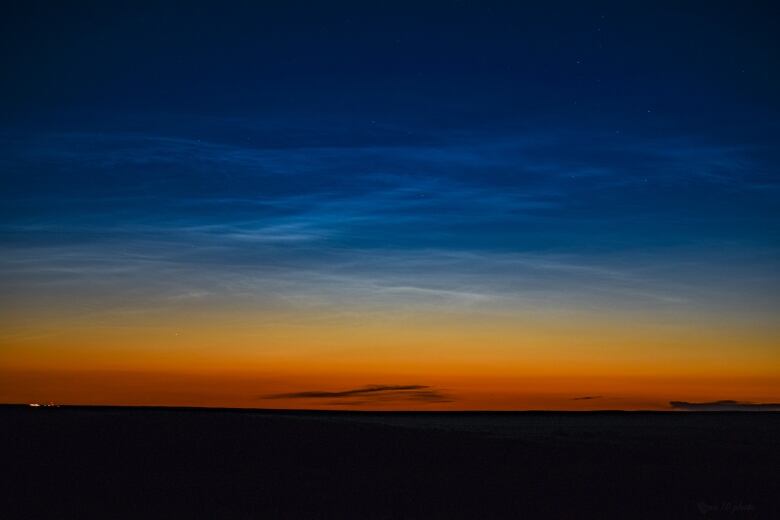Electric-blue, shimmering clouds begin their annual appearance across Canada | CBC News
Amazing. Beautiful. Superb.
These are words many people use to describe one of the sky’s most beautiful displays: noctilucent clouds.
And the time is right for Canadians to try to see them for themselves, especially over this long weekend — if you have clear skies.
Each year, from roughly the beginning of June to August, these clouds — also referred to as NLCs or polar mesospheric clouds — make an appearance in the northern sky.
They are unlike any of the more well-known clouds: they appear almost iridescent, bright and shimmering as either the darkness descends, the sun slips out of sight and the stars begin to dot the sky, or as the darkness begins to turn to daylight as the sun begins to rise.
Another picture from this morning’s amazing Noctilucent clouds show. Newcastle upon Tyne, UK. 23rd June 2022. <a href=”https://twitter.com/hashtag/StormHour?src=hash&ref_src=twsrc%5Etfw”>#StormHour</a> <a href=”https://twitter.com/hashtag/ThePhotoHour?src=hash&ref_src=twsrc%5Etfw”>#ThePhotoHour</a> <a href=”https://twitter.com/hashtag/NLC?src=hash&ref_src=twsrc%5Etfw”>#NLC</a> <a href=”https://twitter.com/NLCalerts?ref_src=twsrc%5Etfw”>@NLCalerts</a> <a href=”https://t.co/FHWJlxnKs8″>pic.twitter.com/FHWJlxnKs8</a>
—@DavidBflower
The phenomenon seems to have a standard recipe for formation: an increase in water vapour, very cold temperatures, and particles — such as dust leftover from meteors in our atmosphere or even rocket exhaust — on which the water vapour can freeze.
NLCs are also found incredibly high up in the atmosphere, about 80 kilometres in altitude. For comparison, the highest clouds we associate with weather are found at altitudes between five to 13 kilometres.

They’re also believed to be a somewhat new phenomena. They were first reported in 1885, two years after the massive Krakatoa volcanic eruption. Though the early belief was that it was due to the eruption and that they’d disappear, they’ve been seen ever since.
How to see them
In the past, NLCs were mostly observed in the high northern latitudes, making Northern Canada an ideal location for observing them. However, in recent years, they have been spotted farther south, as far as Utah and even Nebraska in the U.S.
There is some belief that climate change is also contributing to their development and even to them being seen in latitudes never seen before. For example, in 2019, they were seen as far south as Joshua Tree, Calif. The leading theory is that with more greenhouse gases in the atmosphere, there is more water vapour available on which they can form.
A 2019 study suggests that the appearance of NLCs does fluctuate from year to year and even from decade to decade, but that overall, they have become “significantly” more visible.
These shimmering clouds appear during summer in the Northern Hemisphere because more water molecules travel up from the lower atmosphere and mix with meteor debris. As well, this is a time when the mesosphere — where these clouds develop — is coldest.
WATCH | Scientists capture spectacular noctilucent cloud display over Canada:
Most of Canada is in a good position to see these billowing clouds, though those in southern Ontario may have more difficulty due to being at a lower latitude.
If you’re going to try to spot them, the key is to have a good view of the northern horizon. There’s really no need to get to a dark-sky location in this case, as the clouds are bright, lit up by the sun that lies below the horizon.
They most often appear about 30 minutes to two hours after sunset or 30 minutes to two hours before sunrise, as the sun needs to be roughly five to 13 degrees below the horizon.
And you will be able to tell them apart from weather clouds as those clouds will be dark rather than the bright NLCs.
So if you’re at a cottage, a park or just out celebrating this weekend, remember to look up. You never know what you’ll see.
For all the latest Technology News Click Here

